- Local Time: 04:04 PM
- Weather: 30 ℃ / 87 ℉
Explore Ancient Egyptian Art's history, symbolism, and colors. Discover its hieroglyphics, literature, paintings, sculptures, and famous artifacts, revealing a civilization's rich artistic legacy.
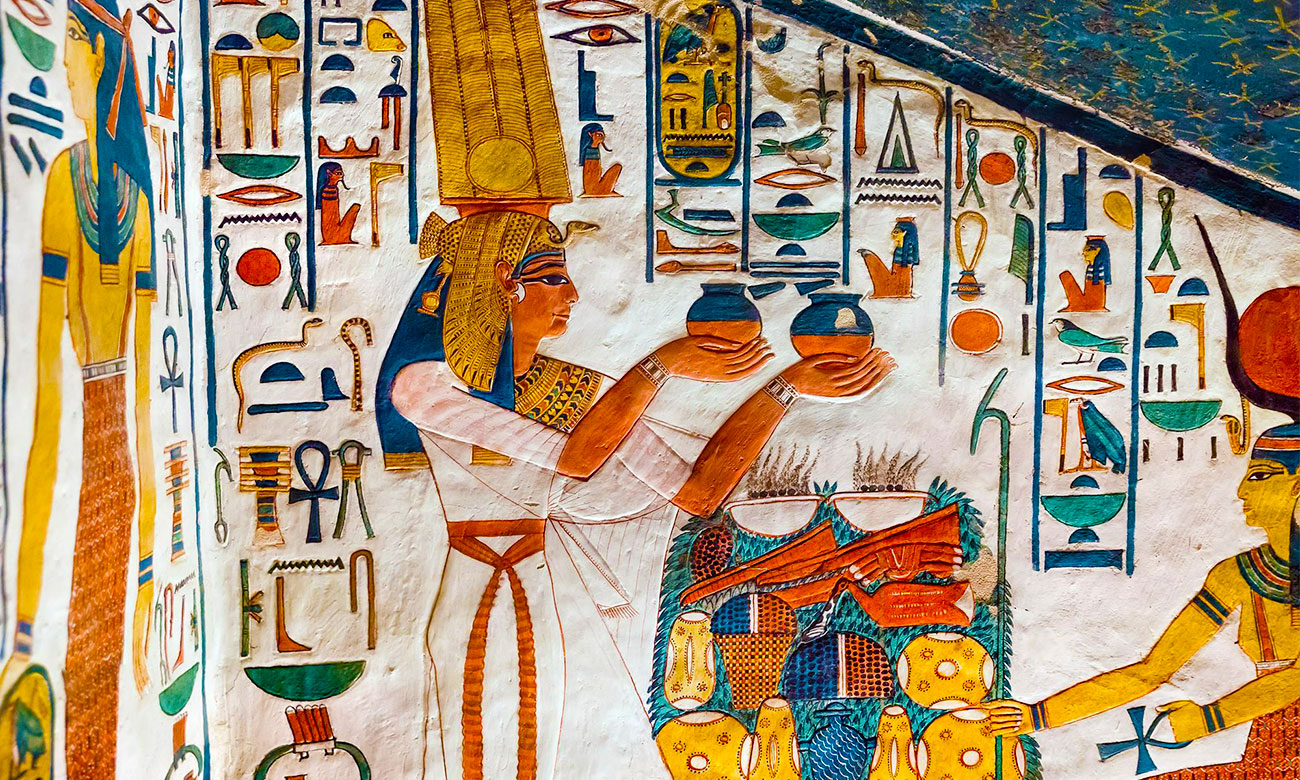
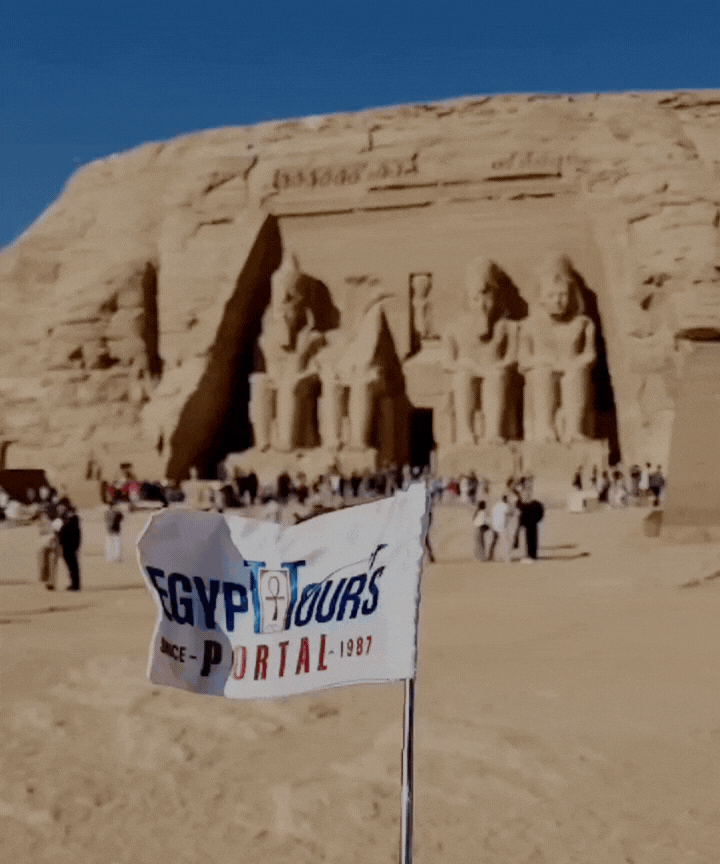
The ancient Egyptians were true artists motivated by religious mythological dogmas, infinite curiosity, and a search for the notion of aesthetics. Over the course of about three thousand years, ancient Egyptian art showcased the powerful bond between the ideologies of their time and the cosmic order. Also, it didn't serve as an individual artistic expression because the ancient Egyptian language didn’t have a word for "Art" as it was intertwined with religion to the deepest core.
The various forms of ancient Egyptian art are characterized by their high quality, absolute symmetry, and detailed depiction of human beings like ancient Egyptian Kings & Queens, Nobles, Ministries, holy Deities, and reflective images from their nature and environment. It was also very symbolic as it carried many vivid representations of philosophical topics like time, life, and death.
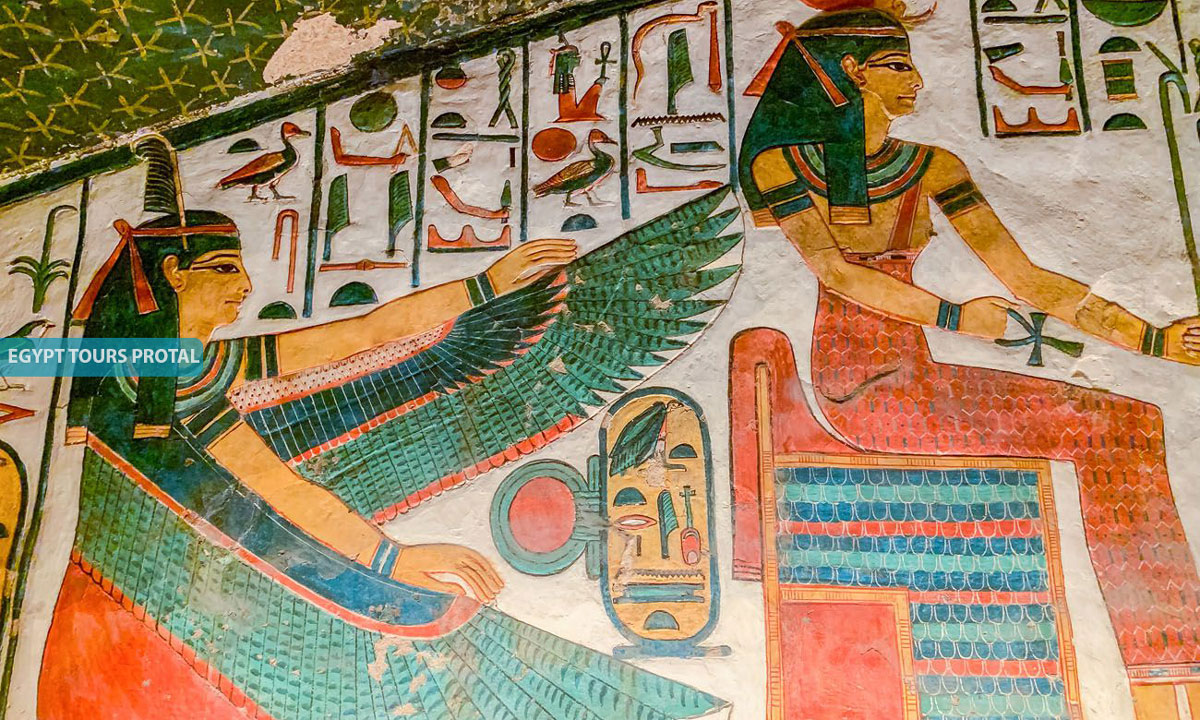
The art of ancient Egypt has gone through a transformative phase of science at the time of its discovery. The art was mainly concerned with the story of the elite, the ruling dynasty, and the upper class who were able to afford the creation of such artworks as decorative tombs and temples filled with beautiful inscriptions that contained amazing stories and literature that revealed a great deal about the history about their lives for both the upper and lower classes of Egypt.
The Narmer Palette is one of the early examples of ancient Egyptian art in the early dynastic period (3150-2613 BCE); it is considered to be a true masterpiece that showcases how brilliant and advanced Egyptian artists were at the time.
In ancient Egypt old Kingdom, the art of architecture showcased in the step pyramid of King Djoser by the architect Imhotep is a true masterpiece of brilliance as it is perfectly designed with papyrus plants and lotus flowers in the best skill and in it also the culture of Egypt enjoyed a sophisticated atmosphere due to the existence of various art forms like paintings, sculptures, literature, and various others.
Also, in the old kingdom, the great pyramids of Giza and the mythical sphinx were constructed to be the greatest examples of ancient Egyptian architecture and art design.
The ancient Egyptian craftsmen created some of the most enchanting pieces of art, discover facts about Ancient Egyptian Craftsmen
Read MoreThe middle kingdom of Egypt (2040-1782 BC) is the highest summit of Egyptian culture as it adopted the realistic representations of the lower classes, unlike the old kingdom, which was only focused on the subject of idealism and the representation of the upper class.
The Middle Kingdom is responsible for the construction of the Karnak temple, which manifests the allure of ancient Egyptian art better than anyone.
In the new kingdom of Egypt (1570-1070 BCE), most of the world's finest, famous, and known ancient Egyptian works of art were created, such as the golden mask of Tutankhamun, the bust of Nefertiti, and the temple of Abu Simbel.
The art of the new kingdom was defined by extravagant designs, high-quality vision, and advanced techniques in contrasting them due to the interaction with the neighboring cultures like the Hittites, who introduced them to the concept of metalworking.
In the Ptolemaic period, a paradigm was presented that suggested the old kingdom standards with the new kingdom's advanced technique accompanied by a Greek task. This paradigm persisted into the Roman period (30-646 AD) till the end of Egyptian culture, and the city of Alexandria is the best example of ancient Greco-Roman art.
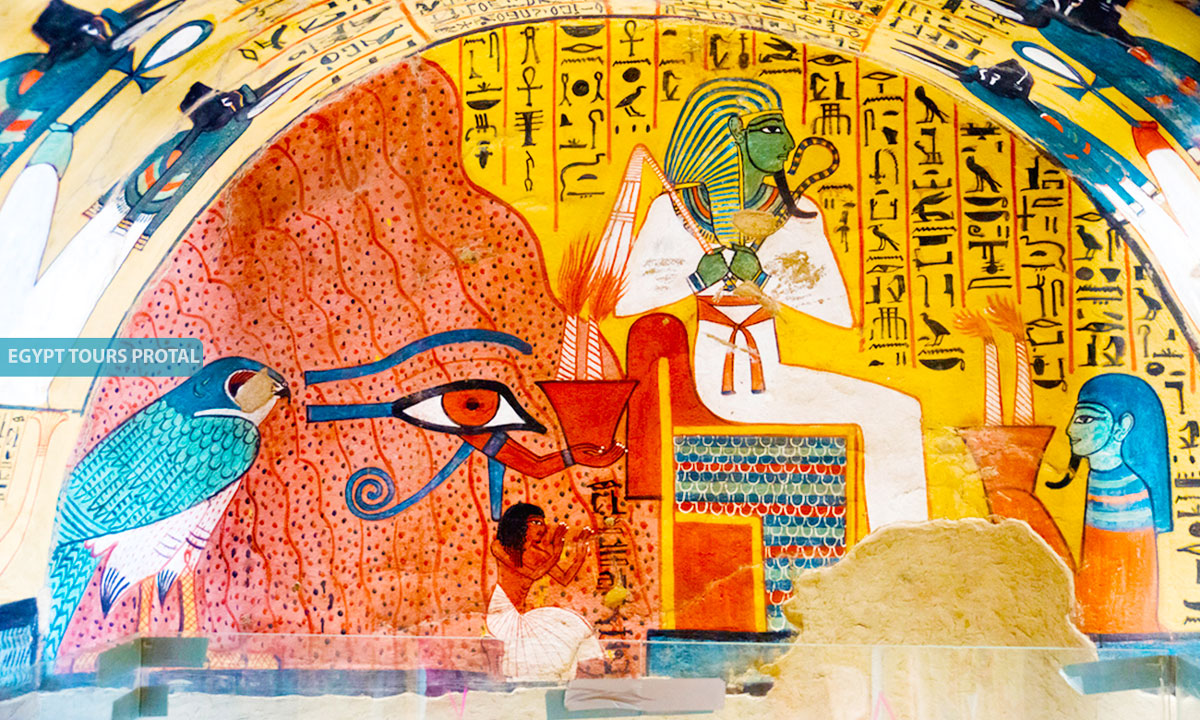
Ancient Egyptian Art was all about symbolism, which played a great role in creating a marvelous sense of order. Art was a vital and essential aspect of any civilization, especially Egypt, as it was seen as a vital source and a foundation for life itself. The sophisticated level of the art stood as a perfect indicator of the greatness of the civilization, plus it offered a clear vision of the development of the civilization across the ages. Since the prehistorical age, around 6000 BC, the ancient Egyptians began to document every aspect of their life, beliefs, cultures, ideas, tools, activities, and everything else. The purpose behind ancient Egyptian art was to express a very important value of the Egyptian cultural consciousness which is balance. The concept of Harmony Ma’at was believed to come into being at the time of creation and sustain the whole universe.
The art gave an ideal representation of the gods of ancient Egypt that offered humanity the most magnificent gifts that brought civilization to life. All the artistic statues and artifacts acted as the home to the divine spirit and a god. Also, all the temple tableaus, tomb paintings, and home and palace gardens were designed to be a reminder of the value of personal and communal stability and the eternal nature of life. Egyptian art also had practical functions, as Hieroglyphs and pictograms were used for communication and record-keeping on monuments, papyrus scrolls, and pottery.

Symbolism played a key role in establishing a sense of order, which can clearly be viewed from the Pharaoh's regalia, which symbolizes his power to claim order and dominance and the omnipresence of the Egyptian gods and goddesses. The mummification process is also an example of great, genuine ancient Egyptian art as everything about it, like canopic jars and wood covens, screamed pure beauty and wonder.
Ancient Egyptian artists were able to showcase a sophisticated knowledge of anatomy and maintain close attention to details, which provided a lot of important information about their culture and history. Animals were also very symbolic in Egyptian art. Ancient Egyptian art was steeped in symbolism, weaving deep meanings into colors, regalia, and representations of animals. The pharaoh's attire symbolized their authority in maintaining order. Paintings, sculptures, Animal art, and jewelry reflected societal norms, fashion, and the importance of family and community. Art was used to showcase the power and authority of the ruling pharaohs. There are famous ancient Egyptian symbols like the Ankh (representing life), the Eye of Horus (symbolizing protection), and the scarab beetle (associated with rebirth), which hold deep cultural and spiritual meanings.
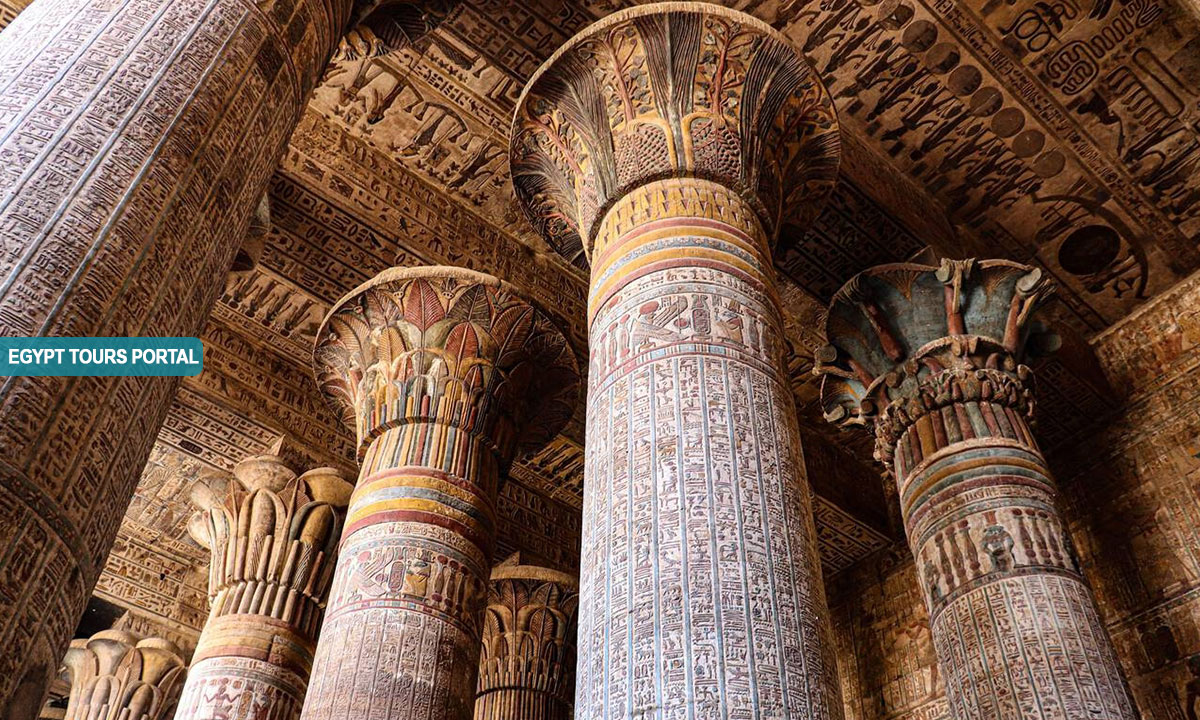
Colors had profound meanings; the language had four basic color terms. Blue, representing the Nile's life-giving waters, symbolized fertility and birth. It, along with green, stood for rejuvenation and vegetation. Osiris, associated with rebirth, was depicted with green skin, and coffins were sometimes colored green to aid in the afterlife. Turquoise and faience were popular in funerary objects due to their color symbolism.
Black represented Egypt's fertile soil, tied to fertility and rebirth, often seen in depictions of Osiris and funerary deities like Anubis. Gold symbolized divinity as the blood of the gods and goddess, its rarity linking it to precious materials. It was even referred to as "The Flesh of the God". Silver, termed "White Gold" was likened to "The Bones of the Gods". Red, orange, and yellow had dual meanings. They symbolized the sun, seen in royal statues and jewelry. Red ink denoted the importance of papyrus. Additionally, they were tied to the desert and associated with Set. These colors held complex significances, embodying both positive and ambiguous attributes in ancient Egyptian art.

Ancient Egyptian hieroglyphics are considered to be an incredible part of ancient Egyptian art, as the texts were filled with countless pictures and symbols that had been used to have independent meanings or combinations. Some of the symbols convey multiple meanings, which gave Egyptian literature a unique, supreme feel.
The Egyptian literature contained many artistic forms, such as hymns to the gods, mythological, magical, wisdom, and mortuary texts. They would frequently use hierarchical proportion (in which the size of the person of the event would indicate their relative importance) in their paintings and sculptures.
Most of the ancient Egyptian deities and the divine pharaohs were made larger than any other, and the high official and their tombs, even the servants, entertainers, animals, trees, and architectural details, were usually smaller to indicate their low stature compared to the stature of the kings of Egypt.
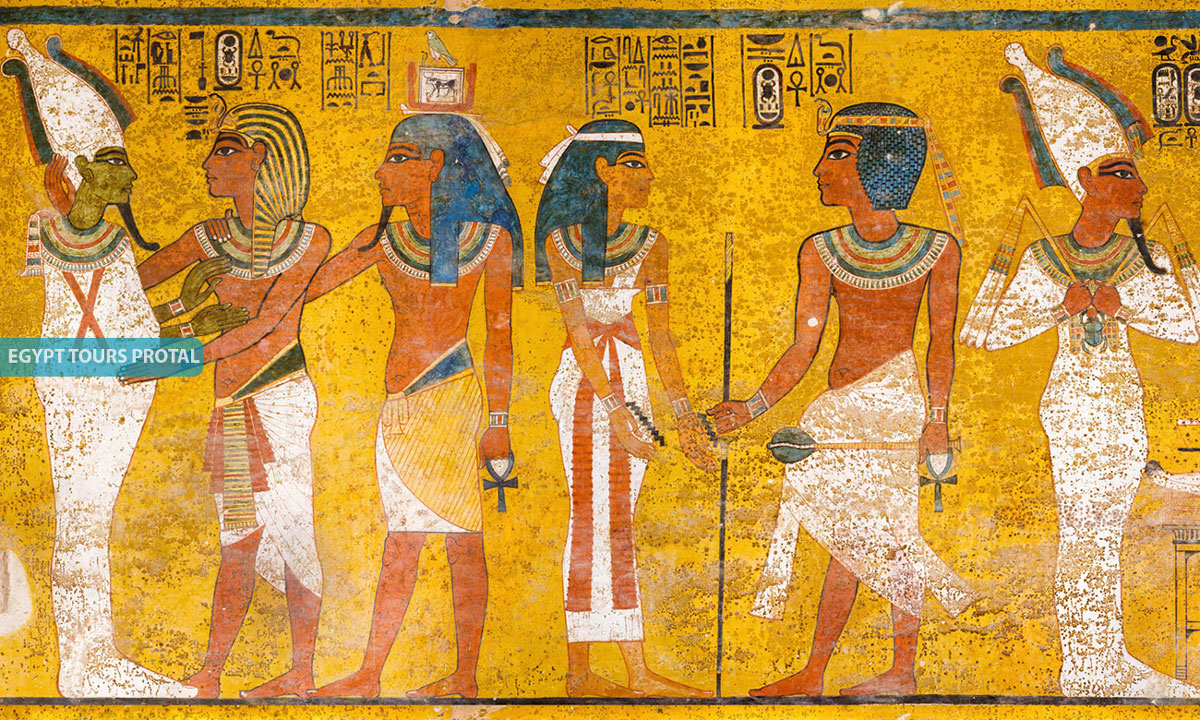
The Ancient Egyptian paintings were created to make the afterlife of the deceased more pleasant. The paintings showed many images from normal life, like hunting and fishing, with close-up landscape backgrounds of reeds and water.
They were painted on temple walls & tombs of ancient Egypt and held many themes like their journey to the afterlife or the deceased standing in front of Osiris or showcasing the activities the deceased was involved in. The paintings were made in a unique manner as they showed a profile view or a side view of the animal or a person at the same time.
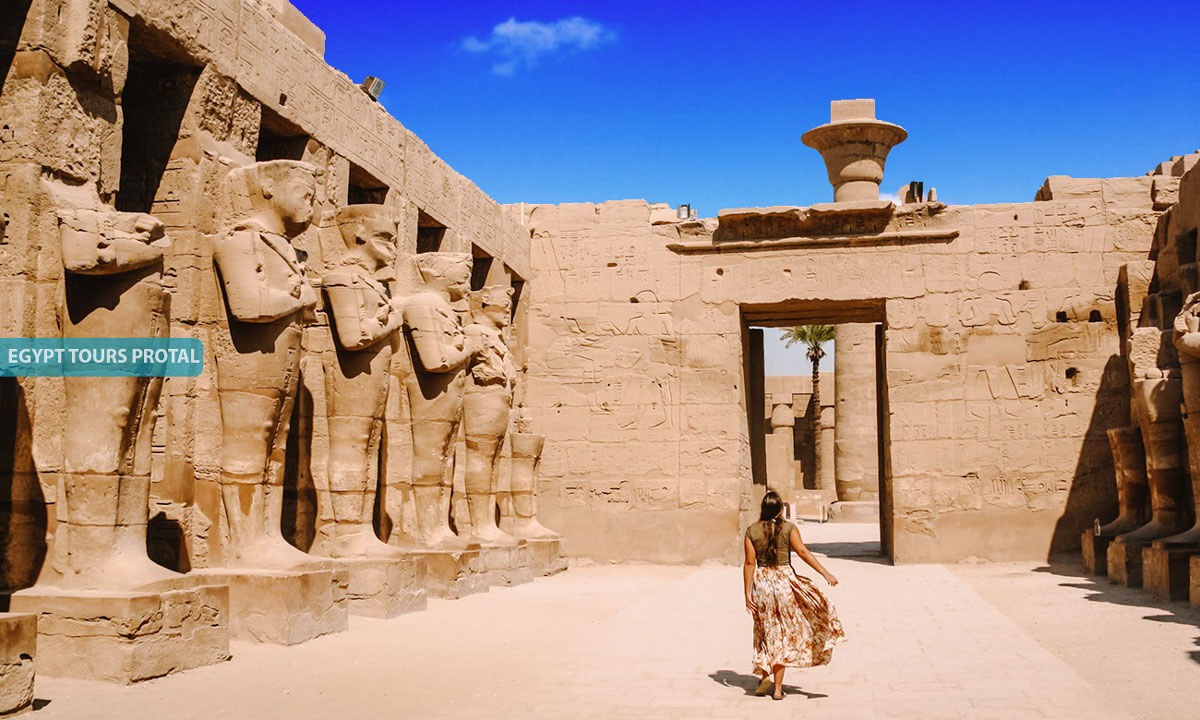
Most of the ancient Egyptian artifacts were constructed to represent the ancient Egyptian gods, the divine kings, and queens in the most extravagant, massive, and magnificent manner. The statues were built in order to give eternal life to the kings and queens and to enable the public to see them in a physical form.
Explore the history, types & facts of Ancient Egyptian architecture, including pyramids, temples & more. Learn about their techniques, materials & achievements.
Read MoreThey were created following certain rules, as the male statues were darker than the female ones. In the seated statues, hands were required to be placed on the knee; as for the appearance of the gods, each god and goddess's appearance was governed by specific rules.

These examples represent the diverse range of art and artifacts from ancient Egypt, showcasing their mastery of sculpture, architecture, hieroglyphs, and religious beliefs. Each of these artifacts and artistic creations provides a glimpse into the beliefs, culture, daily life, and craftsmanship of ancient Egyptians, reflecting their rich culture and religious practices. Some of the most amazing and renowned monuments ever made:

The style of ancient Egyptian art has changed and transformed a lot across history as since the old kingdom (2700 – 2200 BC), grand works of art such as Pyramids, temples, and monumental sculptures defined the landscape at the time period which reflected their reverence for the pharaoh and the gods. Across the tombs in the Saqqara area, there are a number of walls stretched with intricately carved reliefs, narrating myths and rituals and showcasing many scenes from the life and duties of royal and powerful figures that shed light on the social and cosmic hierarchy of Egypt plus their aim to provide absolute balance and order.
In the Middle Kingdom (2040 – 1782 BC), the artistic styles were characterized by a focus on stability, continuity, and traditional representations, as seen across all the small artifacts, carvings, and statues. Their goal was to show as much of the body to the gods as possible, which would explain why both the profile and frontal views of a body were integrated into one sign figure that was easily recognized by both gods and men. The display of size played a role. The size of kings were larger than life to symbolize their god-like powers, while wives & children, servants, and animals were drawn smaller to indicate their lesser significance.
Read more about how daily life in ancient Egypt was, discover the social classes, how have they discovered technology, and more.
Read MoreThe usage of colors across all the tombs, walls, and artifacts outlined many symbolic meanings related to celestial objects, deities, and royalty. During the artistic expression of the ancient Egyptians, Every detail in all the reliefs, statues, artifacts, and Paintings held a meaning that sheds light on the ways of their daily life and their religious beliefs. The new kingdom (1570 – 1050 BC) saw a magnificent excellent in the creation of different kinds of temples, artifacts, obelisks, and tombs, which include The Temple of Amon-Ra at Karnak, Luxor temple, Hatshepsut temple, Medinet Habu, the bust of Nefertiti, the golden death mask of Tutankhamun, and everything found in the majestic city of Thebes which is considered by far some of the most legendary and recognized ruins about the ancient Egyptian civilization.
The Amarna Period (1353-1336 BCE) was a significant shift in the artistic style of the ancient Egyptians that sought more realistic representation and added a sense of movement in all the images & the statues that was initiated by Akhenaton’s move to monotheism, which faded entirely after his death. One of the main reasons for the longevity and greatness of ancient Egyptian art is the civilization’s quest to learn new techniques and styles and incorporate them to reach as close to perfection as much as possible.

Ancient Egyptian Papyrus art was a marvelous manner used for mainly general documentation and record-keeping, but later on, it rose as a vessel for carrying the most incredible paintings, poems, and literature arts that shed light on the ancient Egyptians' mastery of color, composition, and storytelling. The papyrus flower emerged as a holy plant that rose on the banks of the Nile River by the grace of the gods, which would explain why it was used both practically and symbolically. Its hieroglyph represented "Freshness" and was worn as an amulet for protection. The papyrus plant symbolized lower Egypt, which explains why it was attached to the goddess Wadjet, while the lotus symbolized upper Egypt.
Many artistic uses of Papyrus can be seen in the architectural features of the temples of Egypt, which are known to symbolize Egyptian cosmology and primeval marsh. The carvings of papyrus symbolized the edge of order and chaos, where ritual hunts were portrayed as maintaining order against chaotic forces. Papyrus was mentioned in a number of mythical tales and rituals, like the story of Isis, where she hides Horus in papyrus thickets from his evil uncle Seth. The Shaking of the Papyrus ritual honored Hathor by using papyrus stalks to evoke the mythic environment. The papyrus was necessary for writing, which was formed into rolls or sheets and served as a writing surface for administrative, legal, religious, and illustrated texts like the Book of the Dead, for example. The ancient Egyptian Papyrus art has acted as a window to the everyday life, religious rituals, and mythological narratives of the ancient Egyptians.
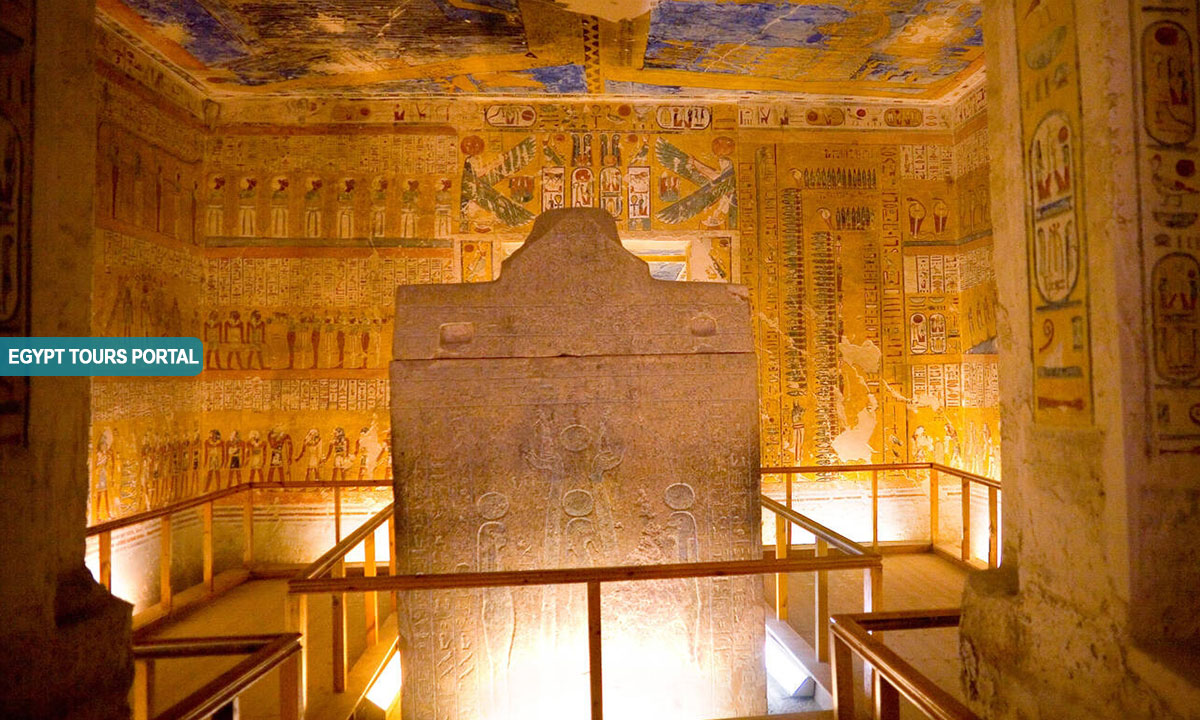
The tomb art was believed to be a celestial language that acted as a bridge of contact between the land of the living and the dead. The tomb art acted as a biography that documented all the facts, challenges, victories, and memories of the deceased. The ancient Egyptian funerary art was a magical formula that earned the grace of the gods and navigated across the dangerous underworld in order to enter the blessed eternal afterlife. The art of the ancient Egyptian tombs was made of a combination of hieroglyphs that depicted historical events, religious beliefs, and the life of the deceased. The colorful and vibrant Murals, inscriptions, and Paintings provided a realistic image of the activities and environment of the ancient Egyptians. The artistry and objects related to the ancient Egyptians' tombs were cultivated for ages in the shape of simple wooden boxes that served as burial containers, evolving swiftly into coffins, symbolically known as the "Lord of Life". These coffins, positioned to face the rising sun, protected the body and housed the Ka while also featuring decorations inside and out, from funerary texts to images of offerings.
Read the most important information about ancient Egyptian tombs, also explore the most famous ancient Egyptian tombs in Luxor and Aswan.
Read MoreThe coffins of ancient Egypt were carved from amazing materials like wood, stone, gold, and more epic materials that held images and writings from the Book of the Dead. Within the tombs were the blessed canopic jars, "Four Sons of Horus" that held organs taken from the body in the mummification process. All the tombs held marvelous funerary figurines called Ushabtis, which were transformed from simple servant statues to mummiform figures inscribed with texts intended to serve the deceased in the afterlife by performing labor tasks. Funerary Masks like the golden mask of Tutankhamun were found in the tomb in order to elevate the wearer from mortal to divine status, serving both religious and burial purposes. The tombs were also known to have a magnificent false door that acted as a form of a passage or a radio that could connect the living and the dead.

Ancient Egyptian art's portrayal of animals reflects the civilization's deep reverence for nature, the significance of animal symbolism in their religious beliefs, and the integration of animals into various aspects of daily life and spirituality. Ancient Egyptian animal art held great meaning in every single context as it has for ages radiated great symbolic importance from every corner of the culture as the animal art has represented various gods, qualities, and many aspects of life. The stylized, symbolic depiction of the animals was seen all over the archaeological marvels of Egypt, which display the lion symbolizing power and strength, which was associated with the sun god Ra, while the ibis of Thoth represented wisdom and knowledge. The animals were seen as a partial depiction of the ancient Egyptian gods, as seen with the god Anubis, who was depicted with a jackal head, Hathor with a cow head, and Horus with a falcon head. The art was highly successful in depicting all the attributes and characteristics associated with these deities.
Animals were so important and influential that some hieroglyphs were direct representations of animals or simply symbolized concepts or ideas associated with particular animals. Egyptian artisans excelled in their quest to present and immortalize their work as much as possible, as seen across all the survived paintings, sculptures, amulets, and jewelry. The funerary art of the animals was also highly significant as many animals were mummified and later on put on display such as the sacred Apis bulls or cats. Across the tombs and the temples, there were many paintings and works of art that show many senses of their daily lives, their crucial role in agricultural activities, plus the image of a number of hunting expeditions. Due to the prominent symbolic power of the animal, their works of art were seen as protective symbols that conveyed absolute power and victory, such as the cobra, which represented the Uraeus that adorned the crowns of pharaohs, thus symbolizing royal power and protection, while the sphinx with its lion body and human head was seen as a guardian figure.
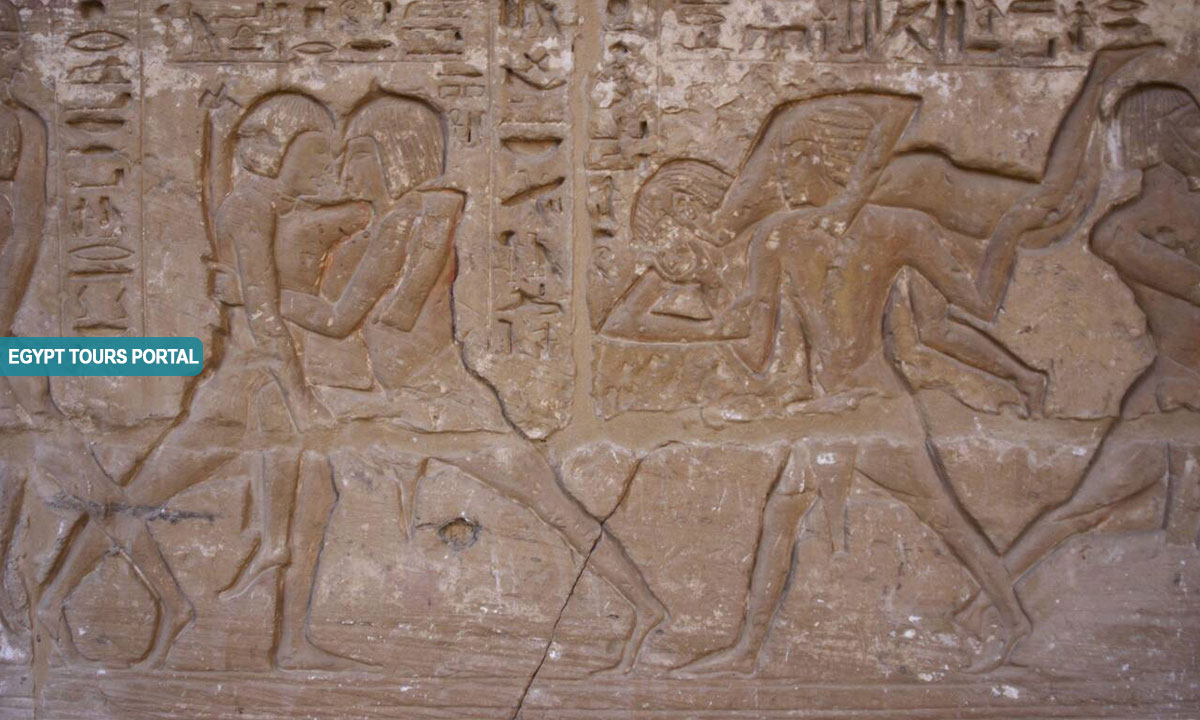
Ancient Egypt had a rich tradition of martial arts, with four main disciplines that showcased their physical prowess and skill: grappling, stick fencing, pugilism, and water jousting. These weren't just physical contests; they were deeply integrated into Egyptian life, featuring prominently in celebrations, military training, and daily routines. These disciplines also served as conduits for cultural exchange, incorporating foreign techniques and styles.
Grappling, a cornerstone sport dating back to 3200-3000 BC, can be traced through ancient depictions, showcasing its technical precision and connection to military training. Water jousting, originating in the Old Kingdom, symbolized not only physical combat but also mirrored daily life in marshy areas. Stick fencing emerged during the New Kingdom with intricate equipment, closely linked to grappling and influenced by foreign techniques. Pugilism, while less detailed in imagery, hinted at the presence of boxing matches in grand celebrations and official events. Furthermore, tahtib, a martial art that emphasized honesty and integrity, evolved from military practice into a folk dance with wooden stick movements, thriving primarily in Upper Egypt. It left its mark on Egyptian culture, transitioning from a military exercise to a celebrated art form in civilian contexts, adding a unique touch to weddings and celebrations with its distinctive patterns and rhythmic sounds.

There is no better place on earth that can offer a deeper look at the beautiful core of ancient art than Egypt. You have this once-in-a-lifetime chance with our Egypt travel packages to explore the majestic monuments and artifacts of ancient Egypt through the enchanting cities of Cairo, Luxor, and Aswan through an unforgettable Nile River cruise on the life force of this heavenly country.
Private 4 Days Cairo Tour Packages for American Travelers 4 days Cairo Egypt Tour pa...
Tour Location: Cairo – Giza...
5 Days Cairo and Alexandria Tour Package For American Travelers 5 days Cairo and Ale...
Tour Location: Cairo/Giza/Alexandria...
6 Days Cairo, Luxor & Aswan Tour Package For American Travelers 6 days Cairo, Lu...
Tour Location: Cairo/Giza/Aswan/Luxor...
Amazing 7 Days Cairo and Hurghada Holiday for American Travelers 7 Days Cairo & ...
Tour Location: Cairo – Giza – Hurgh...
Ancient Egyptian art and architecture are renowned for their distinct style characterized by a focus on symmetry, proportion, and symbolism, which is able to provide an incredible amount of information, facts, and tales about the history of the ruling dynasties, the social construct, the religious beliefs, and many more. The art was very stylized which often showed figures in profile with a combination of frontal and side views. Monumental architecture projects such as the pyramids, temples, and obelisks showcase precise construction techniques and grandeur.
Gold played a great role in both the art and the culture of Egypt as gold was viewed as the blood of the gods and goddesses, as seen with the sun god Ra, who represented divinity, eternity, and the pharaoh's status as a god-king. The use of gold in art has always symbolized wealth, power, and the afterlife's eternal nature.
People and animals are depicted in the most realistic manner but also with a complex combination of symbolism and stylization. The humans were depicted in a rigid profile view, with the head and legs shown from the side and the torso from the front. Animals were always depicted with symbolic meaning and mythical significance that displayed characteristics associated with specific gods and goddesses or representing various aspects of life and the afterlife. Also, each animal stood for a certain concept found in the heart and soul of the ancient Egyptian civilization.
Ancient Egyptian art had a great level of importance as it was used to honor the gods, immortalize pharaohs and elites, convey religious beliefs, document historical events, and provide objects for the deceased to make their way to the afterlife.
In the Middle Kingdom (2040 – 1782 BC), A new artistic movement spread by depicting individuals more realistically and naturally by displaying the aging process and individualized features. The artists during that time period portrayed emotions and personal characteristics by moving away from strict idealized representations.
Ancient Egyptian art was very profound by the canon of proportion, which is a set of elements and strict guidelines used for depicting human figures, animals, and even objects in artwork. The Canon has accurate measurements and ratios for various body parts, thus ensuring consistency and stylistic unity across different artistic productions. Its emphasis on order, timelessness, recognition, practicality, and symbolic representation contributed significantly to the enduring legacy of this civilization's artistic achievements.
The stylistic characteristics of ancient Egyptian art for more than 4000 years maintain consistency, as well as the culture's strong emphasis on tradition, religious beliefs, and the concept of eternal order. Maintaining artistic consistency further solidified Strong Tradition and Reverence for the Past and Hierarchical Society and Status Representation. Limited cultural exchange and geographic isolation also led to artistic traditions flourishing and remaining undisturbed for tens of centuries.
The Middle Kingdom period (2040 – 1782 BC) emphasized conveying personal identity and individualism in art. It explains the spread of realistic portraitures, statues portraying individuals in more naturalistic forms, and narrative scenes depicting daily life and overall culture during that time period.
Ancient Egyptian art has influenced modern art by creating the principles of stylized representations, the use of symbolism, and the emphasis on precise geometric forms. The simplicity and abstraction found in Egyptian art have inspired artists like Picasso and Modigliani, as seen in their work.
Ancient Egyptian art is commonly divided into periods such as the Old Kingdom, which was known for massive monumental architecture like the pyramids; the Middle Kingdom, which was marked by more personal and realistic art; and the New Kingdom, which was known for its elaborate tombs, temples, and art that celebrated military victories and expanded artistic themes.
Ancient Egyptian art during the Middle Kingdom became more personal by departing from strict stylized representations and embracing more realistic depictions of individuals. Portraits became more naturalistic, showing individualized features and emotions which reflected a shift towards a more personalized artistic style.
The entire country of Egypt deserve to be explored with its every heavenly detail but there are places that must be seen before any other such as the breathtaking Hurghada's red sea, The wonders of Cairo the pyramids of Giza, the great sphinx, the Egyptian Museum, Khan El Khalili Bazaar, the wonders of Luxor like Valley of the Kings, Karnak & Hatshepsut temple and the wonders of Aswan such as Abu Simbel temples, Philea temple, Unfinished obelisk and The Wonders of Alexandria like Qaitbat Citadel, Pompey's Pillar and Alexandria Library. Read more about the best places to visit in Egypt.
If you want to apply for a Visa On Arrival that lasts for 30 days then you should be one of the eligible countries, have a valid passport with at least 6 months remaining and pay 25$ USD in cash, as for the E-Visa for 30 day you should have a valid passport for at least 8 months, complete the online application, pay the e-visa fee then print the e-visa to later be presented to the airport border guard. You could also be one of the lucky ones who can obtain a free visa for 90 days. Read more about Egypt travel visa.
Egypt has a variety of delicious cuisines but we recommend “Ful & Ta’meya (Fava Beans and Falafel)”, Mulukhiya, “Koshary”, a traditional Egyptian pasta dish, and Kebab & Kofta, the Egyptian traditional meat dish.
The best time to travel to Egypt is during the winter from September to April as the climate becomes a little tropical accompanied by a magical atmosphere of warm weather with a winter breeze. You will be notified in the week of your trip if the Climate is unsafe and if any changes have been made.
You should pack everything you could ever need in a small bag so you could move easily between your destinations.
We have been creating the finest vacations for more than 20 years around the most majestic destinations in Egypt. Our staff consists of the best operators, guides and drivers who dedicate all of their time & effort to make you have the perfect vacation. All of our tours are customized by Travel, Financial & Time consultants to fit your every possible need during your vacation. It doesn't go without saying that your safety and comfort are our main priority and all of our resources will be directed to provide the finest atmosphere until you return home.
You will feel safe in Egypt as the current atmosphere of the country is quite peaceful after the government took powerful measures like restructuring the entire tourist police to include all the important and tourist attractions in Egypt. Read more about is it safe to travel to Egypt.
Wear whatever feels right and comfortable. It is advised to wear something light and comfortable footwear like a closed-toe shoe to sustain the terrain of Egypt. Put on sun block during your time in Egypt in the summer to protect yourself from the sun.
The best activity is by far boarding a Nile Cruise between Luxor and Aswan or Vise Versa. Witness the beauty of Egypt from a hot balloon or a plane and try all the delicious Egyptian cuisines and drinks plus shopping in old Cairo. Explore the allure and wonders of the red sea in the magical city resorts of Egypt like Hurghada and many more by diving and snorkeling in the marine life or Hurghada. Behold the mesmerizing western desert by a safari trip under the heavenly Egyptian skies.
There are a lot of public holidays in Egypt too many to count either religious or nation, the most important festivals are the holy month of Ramadan which ends with Eid Al Fitr, Christmas and new years eve. Read more about festivals & publich holidays in Egypt.
Egypt is considered to be one of the most liberal Islamic countries but it has become a little bit conservative in the last couple of decades so it is advised to avoid showing your chest, shoulders or legs below the knees.
Arabic is the official language and Most Egyptians, who live in the cities, speak or understand English or at least some English words or phrases. Fewer Egyptians can speak French, Italian, Spanish, and German. Professional tour guides, who work in the tourism sector, are equipped to handle visitors who cannot speak Arabic and they will speak enough English and other languages to fulfill the needs of all our clients.
The fastest way is a car, of course, a taxi. If you are in Cairo ride a white taxi to move faster or you could board the fastest way of transportation in Egypt metro if the roads are in rush hour.
The temperature in Egypt ranges from 37c to 14 c. Summer in Egypt is somehow hot but sometimes it becomes cold at night and winter is cool and mild. The average of low temperatures vary from 9.5 °C in the wintertime to 23 °C in the summertime and the average high temperatures vary from 17 °C in the wintertime to 32 °C in the summertime. The temperature is moderate all along the coasts.
It is the home of everything a traveler might be looking for from amazing historical sites dating to more than 4000 years to enchanting city resorts & beaches. You will live the vacation you deserve as Egypt has everything you could possibly imagine.









